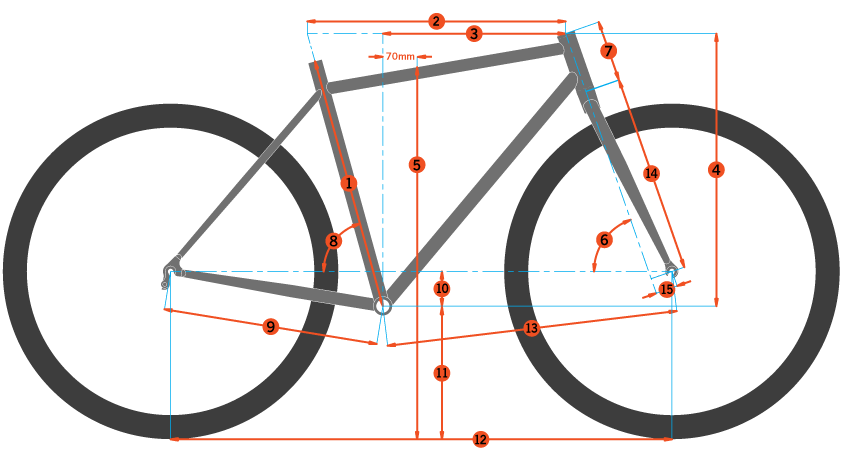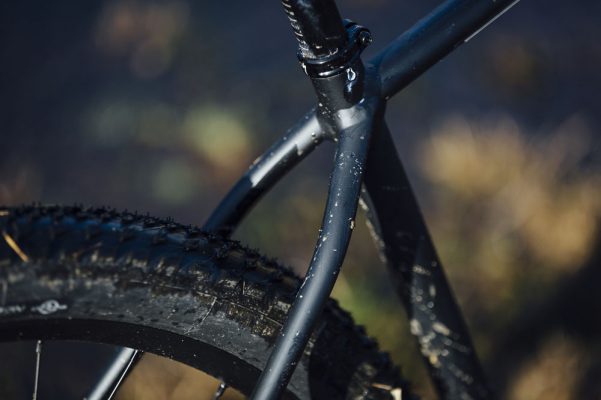You can easily end up with the wrong mountain bike frame size. You can't go off the listed frame size any more. Here's how to avoid getting it wrong...
Bad news: mountain bike frame size is all over the place. There is no consistency. One brand’s Medium/17in bike is another brand’s Large/19in. What’s more, a lot of bike manufacturers’ – and even bike shops’ – sizing advice is often wrong too.
Ultimately you do not have a foolproof frame size. Not one that tallies with what bike brands say, nor one that is consistent from bike to bike. This means shopping for a bike is not simple, particularly if browsing online beforehand. It is not a good idea to select just one frame size and filter the results by that; select the frame size the brand recommends and also the size above.
But with all that said, to give you at least a head-start on what frame sizes to shortlist, whether you’re looking to upgrade or are trying to choose the best beginner mountain bike, here is our mountain bike size guide:
Mountain bike frame size guide
Under 5ft 2in (-157cm) = 13in to 14in (XS)
5ft 2in to 5ft 6in (157cm to 167cm) = 15in to 16in (Small)
5ft 6in to 5ft 10in (167cm to 178cm) = 17in to 18in (Medium)
5ft 10in to 6ft 2in (178cm to 188cm) = 19in to 20in (Large)
6ft 2in or above (182cm+) = 21in to 23in (XL/XXL)
What to do if you’re ‘in between’ mountain bike frame size
We’d strongly advise going for the larger of the two options. It’s easier to make a large bike fit without impairing how it handles; fitting a shorter stem and/or sliding the saddle forward on its rails arguably actually improves bike handling in fact. Trying to make a small bike fit by putting a longer stem on it and/or sliding the saddle backward on its rails will end up impairing the bike’s handling.
The thing to bare in mind when going up a frame size his to make sure there is sufficient standover clearance. Standover is how high the top tube is at the point where you’re astride your bike and straddling it. If the bike has enough standover, you’re on to a winner.

The internet is only useful if you know where to start
Why are things so messed up?
The problem is that bikes have always been sized by the length of their seat tubes. There’s no reason for us to go into why this so (short version: blame roadies) but you do need to understand that this is a big problem.
Whilst seat tube length is important it is not the most important measurement on a bike frame.
The modern move away from frame sizes being listed in numbers of inches has been an improvement. Using ‘Small’, ‘Medium’ and ‘Large’ etc instead of ’16in’, ’17in’ or ’19in’ is a much better idea.
What measurement is the most important then?
Reach.
Reach followed by standover.

Reach measurement
Why is reach the most important measurement?
Reach is the distance between the bottom bracket axle and centre of (the top of) the head tube. See diagram above.
This is a very difficult thing to measure on a bike in the flesh, unless you’re happy to take plumb lines and tape measures into your local bike shop. Thankfully any bike brand worth its salt includes a reach measurement on the geometry charts of its bikes.
Why is reach the vital thing? Because it dictates how the bike actually fits you. It governs if a bike is too cramped or too stretched out for you.
And, unlike seat tube length, reach cannot be adjusted for. You can adjust your saddle height up or down to accommodate seat tube length. Reach cannot be adjusted. You’re stuck with it. A bike with too short a reach will always be too small.
Don’t think you can adjust incorrect reach by changing to a different stem length or by sliding your saddle on its rails backwards. Changing stem length will impair how the bike steers and handles. And saddles slid far back on their rails won’t mean thing when you’re stood up out of the saddle, and when you are seated slid-back saddles will result in inefficient pedal power and a wandery, lift-prone front end.

Check out red blob no.5: that’s standover. (Pic from Kona Bikes).
Don’t forget standover
What is standover? Standover is arguably a more helpful version of seat tube length sizing. Standover is how high the top tube is at the point where you’re astride your bike and straddling it ie. when you’re on stood on the ground in front of your saddle (usually taken to be approx 70mm in front of the bottom bracket). See the pic above.
Again, this is tricky to measure in person but it should be listed in a bike’s geometry chart.
You do need to measure your inside leg though, as this will tell you if the bike has enough standover for you. If you have 28in inside leg, don’t get a bike with 30in standover. Ouch.

Big bike for a big man
Recommended reach numbers for rider heights
Here’s our recommendations based on rider height and recommended reach number…
5ft 2in to 5ft 6in (157cm to 167cm) = 410mm to 450mm reach
5ft 6in to 5ft 10in (167cm to 178cm) = 430mm to 470mm reach
5ft 10in to 6ft 2in (178cm to 188cm) = 450mm to 490mm reach
6ft 2in or above (182cm+) = 470mm to 510mm reach
The above recommendations may startle some people who are used to traditional advice. Then again, there will also be more progressively minded folk who think that we’re being conservative with the reach numbers here and would recommend even longer reach numbers for each rider height.
Broadly speaking we’d recommend getting the largest frame size that still affords you an acceptable amount of standover.
Even if you’ve “always ridden a Large”, don’t be surprised if you find yourself ending up looking at XL or even XXL size bikes. That’s just how it is. Things have changed. Frame sizing has always arguably been incorrect.
As Chris Porter rightly says, “we’re all riding bikes that are too small.”

Dropper post compatibility is a big thing nowadays
Will your dropper still fit?
A word of warning: if ‘upsizing’ a frame size, please check that you’ll be able to fit in a dropper post with the desired amount of drop travel to it.
Even bikes with plenty of standover can still have lengthy seat tubes. Sometimes if you’re on the limit of going up a frame size you can struggle to fit in a 150mm-travel dropper post without your saddle ending up being too high.
Read 5 ways to increase standover on bikes with high seat tubes for more info about this.

Stems can be swapped out at time of purchase usually
Check the stem length
All of this new way of finding out if a bike will fit you properly is reliant on the bike’s stem.
Stems longer than 60mm have no place on a mountain bike in 2018.
Anyone who says they like a long stem is just on a bike that’s too short for them and the long stem is a sticking plaster ‘cure’. Far better to be on a bike with a sufficiently long reach in the first place.
Mountain bikes ideally should have stems between 30mm and 50mm in length. The trouble is that a lot of them still come fitted with longer stems.

Err on the side of big, not small
Don’t end up with the wrong mountain bike frame size
A common end result of going off sizing advice from a bike brand (or even a bike shop) is too end up with a bike that’s too short in reach and comes with a stem that’s too long.
A 6ft tall person would end up riding a ‘Large’ bike with a 75mm stem. They’d be far better on an ‘Extra Large’ bike with a 40mm stem.
Don’t be afraid to ask to try the next frame size up AND to have the stem swapped out at time of purchase. A good bike shop will do that do for you.

Women specific bikes are more about contact points than mythical body differences
What about mountain bike frame size for women?
Contrary to what anyone may tell you, women have the same principal body proportions as men. The whole ‘longer leg, shorter torso’ thing is a complete myth. Bikes fit humans, end of.
With this in mind, all the advice above is for both men and women equally.
















